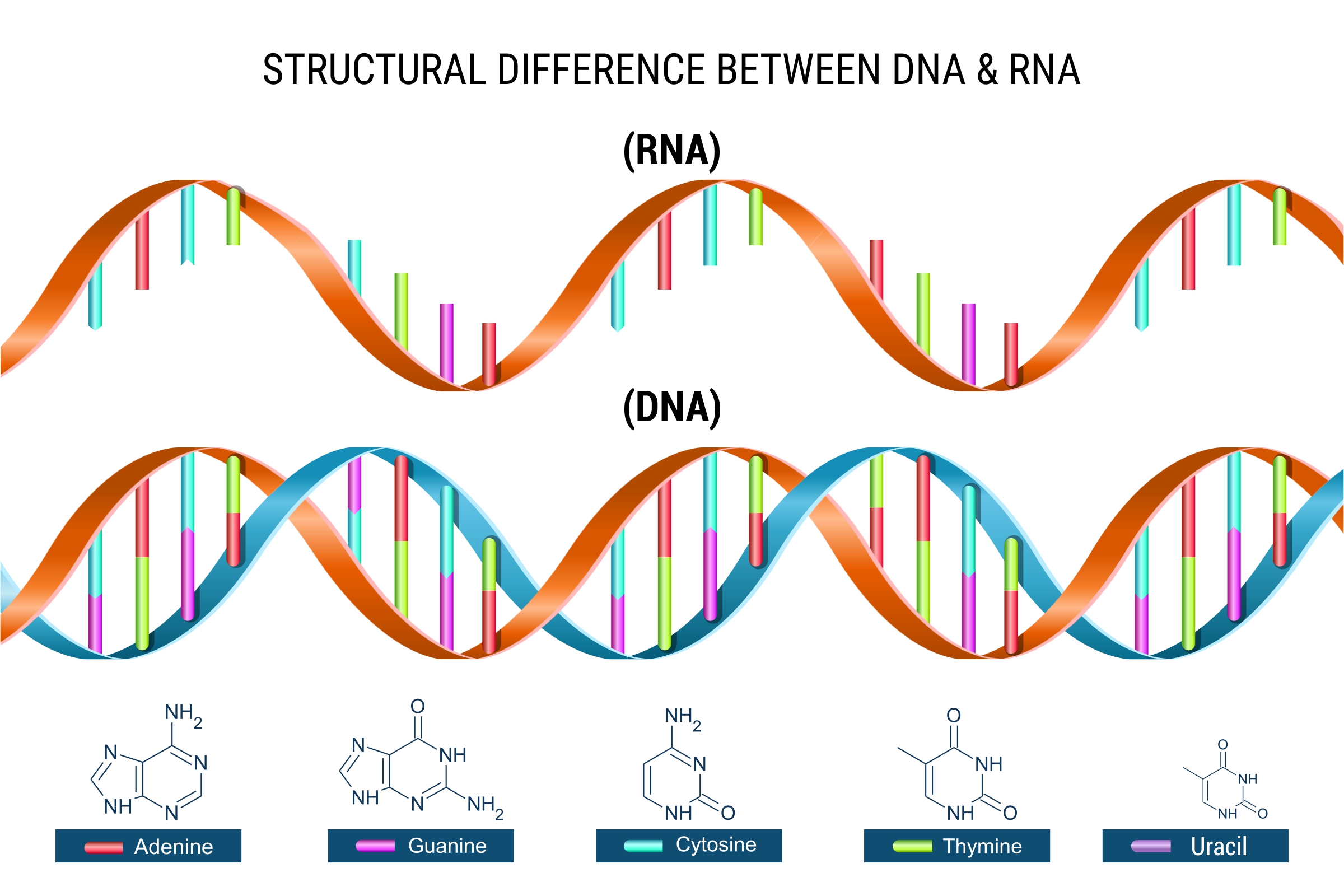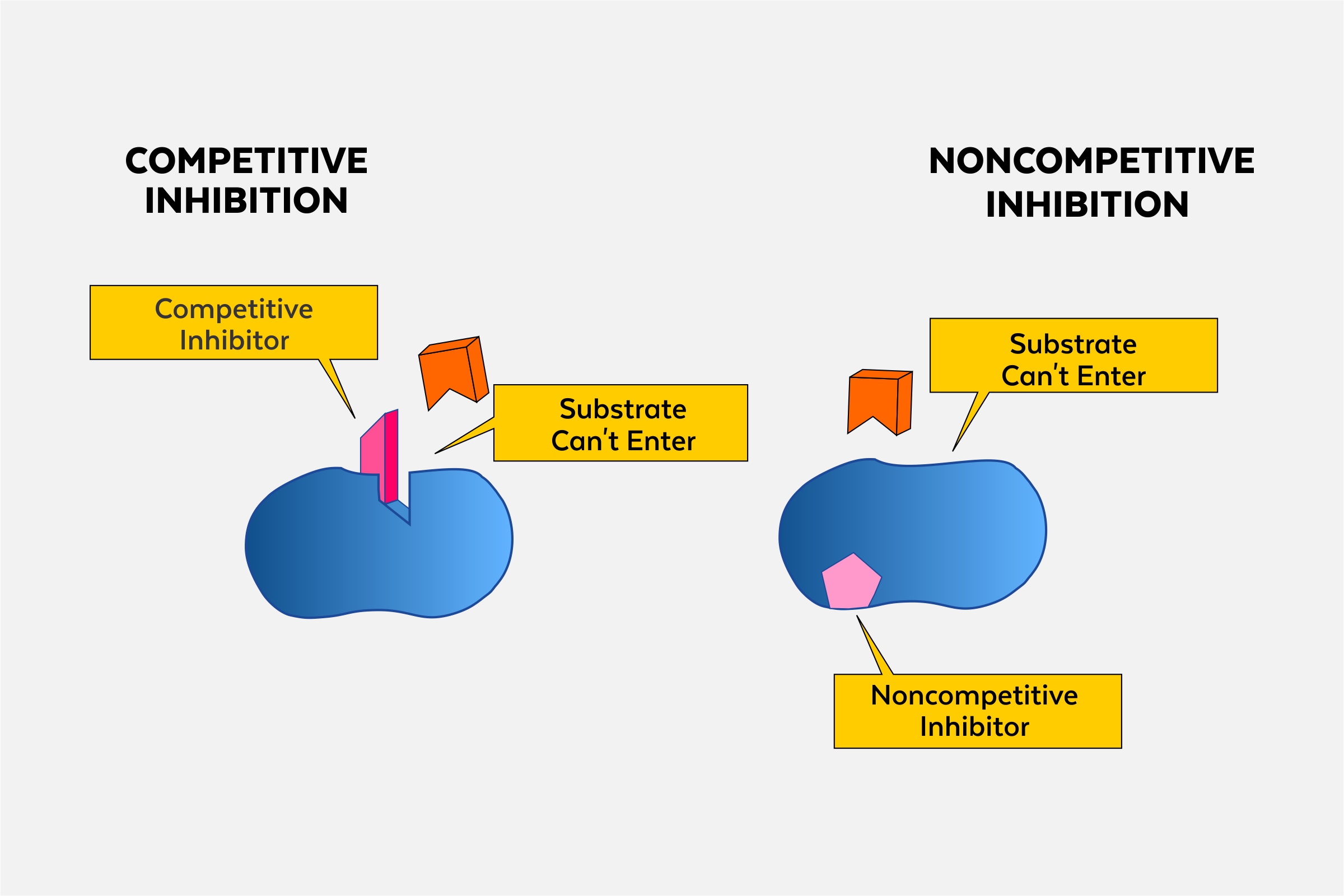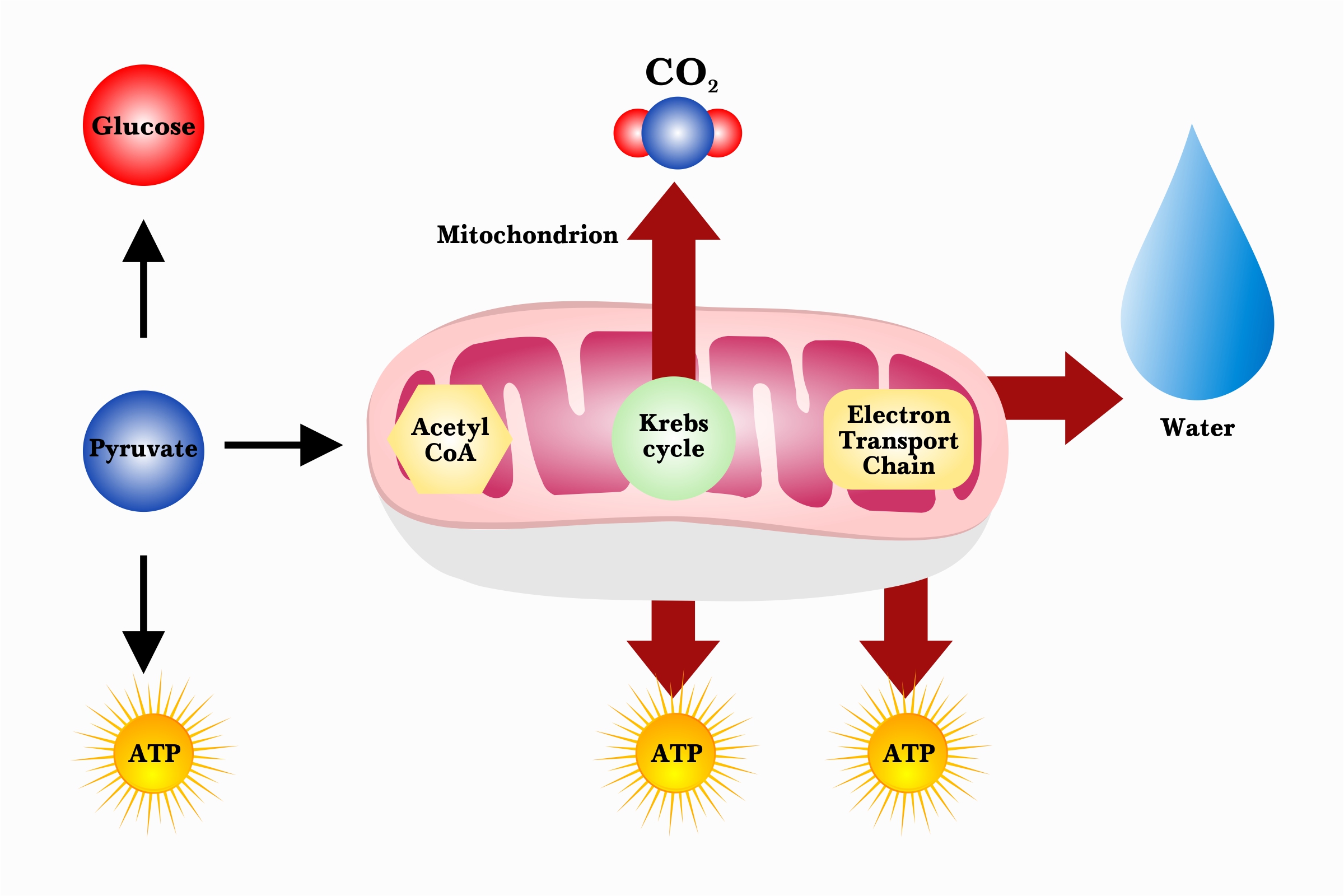Enrich your knowledge with our informative blogs
What are some differences between RNA and DNA?

RNA and DNA, both carry genetic information but there are a few key differences between them. But before moving to key differences let us first get familiar with the definitions.
What is DNA?
DNA is an acronym for Deoxyribonucleic acid is a nucleic acid, which functions as the original blueprint for protein synthesis. It comprises the phosphates, sugar deoxyribose, and a unique sequence of nitrogenous bases guanine (G), adenine (A), thymine (T), and Cytosine (C).
What is RNA?
RNA is an acronym for Ribonucleic acid is a nucleic acid that is directly included in protein synthesis. It is an essential nucleotide with nucleic acids long chains present in all the living cells.
RNA’s primary role is to act as a messenger that conveys instructions from DNA for controlling the synthesis of proteins. It comprises phosphates, the sugar ribose, and nitrogenous bases including guanine (G), Adenine (A), Uracil (U), Cytosine (C).
RNA and DNA share the nitrogenous bases G, C, and A. But thymine is usually present in DNA only whereas Uracil is present in RNA only.
Key differences between RNA and DNA
| TERMS | DNA | RNA |
| Definition | DNA is a long polymer that has a deoxyribose and phosphate backbone having four different bases including adenine, thymine, guanine and cytosine. | RNA is a polymer with a ribose and phosphate backbone with four distinct bases including cytosine, uracil, guanine and adenine. |
| Sugar Portion | It has 2-deoxyribose. | It has ribose. |
| Location | It is located in a cell’s nucleus and the mitochondria. | It is generally found in the nucleus, cytoplasm, and ribosomes. |
| Function | Directs protein synthesis
Storing genetic information Determines the genetic coding It is directly responsible for evolution, metabolic activities, differentiation, and heredity. |
Transferring genetic information from DNA to proteins.
Carrying the genetic information outside the nucleus. Translating it to proteins. |
| Propagation | It replicates on its own. In short, it is self-replicating. | It does not replicate on its own. RNA is synthesized from DNA whenever required. |
| Predominant Structure | It is a double-stranded molecule having a long chain of nucleotides. | It is a single-stranded molecule having a shorter chain of nucleotides. |
| Nitrogenous Bases and Pairing | The base pairing of DNA is as follows: A-T (Adenine pairs with Thymine) GC (Guanine pairs with Cytosine) | The base pairing of RNA is as follows: A-U (Adenine pairs with Uracil) GC (Guanine pairs with Cytosine) |
| Ultraviolet Damage | It is susceptible to UV damage. | As compared to DNA. This one is relatively resistant to UV damage. |
| Helix Geometry | DNA’s helix geometry is β-form. | RNA’s helix geometry is α-form. |
| Bases Ratio | Here, Adenine = Thymine
And Guanine = Cytosine |
Here, Adenine ≠ Thymine
And Guanine ≠ Cytosine |
| A major enzyme involved in the propagation | DNA polymerase | RNA polymerase |
| Molecular Weight | 2 to 6 million | 25000 to 2 million |
| Number | For specific species, the DNA number remains the same for every cell. | The RNA number may differ from cell to cell. |
| Usefulness and Versatility | It is more stable and also holds more complex information for a longer time. | It is more versatile than DNA and is capable of performing diverse tasks in an organism. |
| Types | Chromosomal DNA and Extrachromosomal DNA including chl-DNA, mt-DNA, etc. | Its types include messenger RNA (mRNA), Ribosomal RNA (rRNA), and Transfer RNA (tRNA) |

Visualize the in-depth understanding of the natural world!
Biology would sound more interesting when your curiosity levels are satisfied with better visuals & logical explanations.
Categories
Recent Posts
- List of the qualities you should look for in your tutors?
- What is the most useful formulas in math?
- Describe the process of eating to defecation of food?
- Difference between the natural and artificial active response by the immunology system.
- Explain the different circle theorems
- How are nerve cells adapted to their function?










